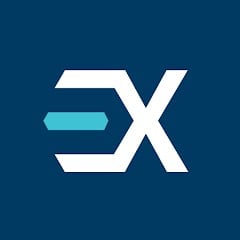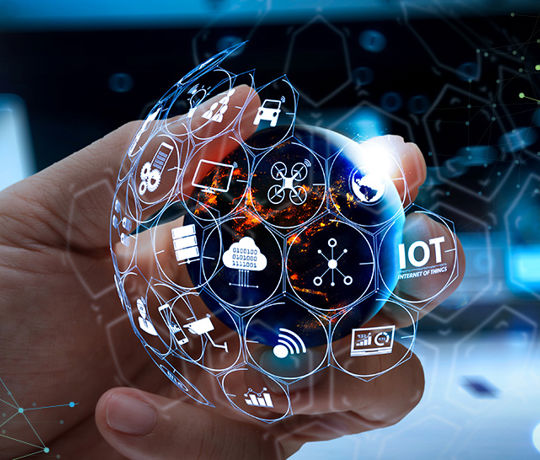Search results
In today’s networks, everything is connected using fiber optics: home, buildings, data centers, antennas, companies, smart cities and so on. It is therefore crucial to test if optical connections are working, if the splices are done properly and that the fiber was not damaged during installation. The telecom landscape is one of constant, rapid evolution. Testing approaches have evolved tremendously over the years. Methods that were acceptable 20 years ago are obsolete today. In this educational webinar, we examine various testing solutions, their strengths and weaknesses, what they cover or lack and where they best fit. The overview will be backed by metrology data as the uncertainty/accuracy of various methodologies are explained. The following questions will be tackled: Tier 1 and Tier 2 testing: is the distinction still applicable? What is “certification”? Is it still relevant? Can I do that with an OTDR? What is the best testing solution: optical source/power meter, OLTS, OTDR or something else? At the end of this session, you will be more confident in selecting the right solution for your specific needs. Key takeaways: Understanding the difference between OTDR and OLTS (S/PM) measurements Understanding testing requirements per network type Selecting optimal test solutions per network type and needs Join Gwenn Amice as he separates facts from feelings when it comes to fiber testing.
ResourcesJoin speaker Kevin Peres as he walks you through the theory around Ethernet technology as well as best practices for turning-up, installing and troubleshooting today’s Ethernet-based services. The testing portion will explore RFC-2544 versus EtherSAM Y.1564 methodologies for Ethernet SLA validation, traffic generation and monitoring for troubleshooting as well as smart loop and third-party testing. Key takeaways: Ethernet 101 Explanation of the OSI layers 1-4 Y.1564 setup and configuration Overview of iSAM
ResourcesFTTH (fiber to the home) rollout continues to be a hot topic as customers demand more bandwidth, whether it’s to support smart TVs, video/OTT streaming, multi-screens or home businesses. This FTTH rollout comes with new challenges and issues that will surface during construction, activation and maintenance of the networks. For those that are new to the market or simply require a refresher, we’re pleased to offer a series of must-attend educational webinars covering FTTH best practice. Our first webinar will cover the basics of fiber to the home, address its challenges and provide tips to help technicians or managers ride the wave of this key transformation while reaping its financial rewards. Watch your inbox for more information on the next webinar in the series, which will cover troubleshooting best practices.
ResourcesAfter the basics of the FTTH rollout in Part 1 have been discussed and demonstrated, in Part 2 of the series we will deal with end customer activation and troubleshooting. Typical problems or errors that can occur on the physical and / or transport layer of the network are highlighted. Furthermore, measuring devices for end customer activation are shown in order to carry out the connection without problems and to avoid a second visit. Participants will learn how to easily find the most common mistakes and problems that can occur during the life of an FTTH network.
ResourcesTo keep pace with bandwidth demands, network operators are supporting higher transmission rates and upgrading both the network capacity and the number of transport links. 10Gbp/s metro network links are now being upgraded to 100Gbp/s links to support IoT, big data, Cloud and 5G services. It is becoming imperative to understand the impact of 100G Ethernet transport in the metropolitan area network, the challenges of new optical interfaces and most importantly how to implement the right testing processes to deliver flawless quality of service (QoS). In this webinar, we will focus on testing examples using an advanced solution that integrates EXFO's unique flexible Open Transceiver System. Key takeaways: Understanding the evolution of the optical interface 100G technology review: What's out there in terms of transceivers? 100G Ethernet testing simplicity using the iSAM application An overview of OTU4 testing use cases Transceiver validation and testing considerations using the iOptics application
ResourcesThe increasing demand for anytime, anywhere connectivity is stretching network bandwidth limits and the fiber network must be ready to support this greater density of information. In recent years, fiber optic transmitter technology has evolved, pushing the boundaries of the impossible to the possible via smaller, faster, cheaper transceivers. But what about the fiber itself? Is the bandwidth that fiber can support infinite? The obvious answer is “no”. In fact, even singlemode fiber has significant limitations in the form of dispersion, namely chromatic dispersion (CD) and polarization mode dispersion (PMD) and induced nonlinear effects (NLE). This webinar will equip you with the much-needed insight for making more informed decisions on when to test CD and PMD. Key takeaways: Understanding the nature and effects of CD, PMD and NLE through graphical interpretation Best practices for complete fiber characterization, with focus on CD and PMD Understanding the impact of CD and PMD on next-generation transceivers throughout the network
ResourcesUnderstanding and testing Remote-PHY and DOCSIS 3.1 Remote PHY (R-PHY) is a key transformation towards next-generation gigabit networks. CATV and multiple-system operators (MSOs) are prepping their networks to support DOCSIS 3.1 and eventually FTTH/EPON. These rollouts push fiber ever deeper and closer to subscribers to ensure a better quality of experience. This educational webinar will focus on the deployment of DOCSIS 3.1 using the Remote PHY DAA architecture. The 45-minute session will cover various aspects of deployment starting with an overview of DOCSIS 3.1 and explaining why R-PHY is the preferred technology. The webinar will also cover the best practices in testing fiber, DWDM and services including synchronization. Key takeaways: DOCSIS 3.1 basics The advantage of the R-PHY DAA architecture Best practices for testing
Resources5G wireless broadband is here. It is the latest advance in cellular technology. 5G offers greater capacity, higher data rates and much lower latency. And it will enable further innovations—such as the internet of things (IoT) and network slicing— to create a smarter, more connected world. 5G development has been well underway for some time and many companies have already introduced early versions of 5G devices, applications and networks. However, it may still take a few years before we see the full potential and benefits of 5G. How can operators make sure they deliver the 5G experience to their customers and take full advantage of new revenue streams? How can they guarantee the performance of these new services and applications? In this webinar, we’ll tackle those questions and more. Join us to learn about key 5G trends, technologies and requirements such as: 5G architectures: how the network is changing to adapt to next-gen technologies 5G new radio, millimeter wave, massive MIMO and beamforming Important testing and performance monitoring requirements Internet of things (IoT): examples like the smart farm will be discussed
ResourcesAs networks evolve to 5G, automation is becoming a much talked about topic. But how does automation come into play in the context of validating transceivers, supporting service activation and qualifying network elements, in both the lab and field environments? This webinar will help you understand the benefits of automation, more specifically, how it empowers technicians—both in the lab and in the field—to close out their day-to-day tasks with speed and accuracy. Key takeaways: Why it’s important to automate repetitive and complex tasks What are the proper steps to automate testing processes How to automate the most basic to the more complex testing features using EXFO test equipment
ResourcesIn Part I, we covered the different types of WDM technologies and the key parameters to be controlled and measured everywhere on the network—from the backhaul to the fronthaul. In many situations, simply running more backhaul and fronthaul fiber cables in conduits or strung overhead is not economically feasible, due to labor costs and outside plant capital costs. It is possible to use hub and cell site link aggregation routers to relieve this “fiber exhaustion” bandwidth pressure, but single/dual wavelength approaches are not ultimately scalable, with the 5G 3GPP roadmap laying out bandwidth-intensive options such as FR2 mmWave, massive MIMO and Coordinated Multi-Point (CoMP). The most scalable and cost-effective options for 5G carriers are different forms of wavelength division multiplexing (WDM). Key takeaways: Various WDM options and advantages of WDM in 5G optical access networks Recent component technology innovations that promise to radically change carrier economics of DWDM
Resources








